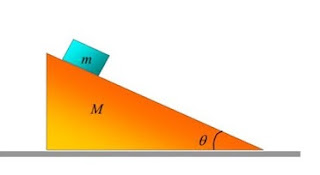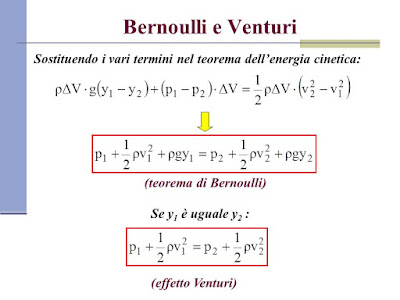Lavoro in termodinamica
In termodinamica, il lavoro viene scomposto per comodità in due contributi: un contributo relativo alla variazione di volume (lavoro di volume) e un contributo indipendente dalla variazione di volume (lavoro isocoro).Lavoro di volume
In termodinamica un gas esercita una pressione P interna sulle pareti del recipiente in cui è contenuto. Se una di queste pareti (di area A) è mobile e si sposta di una quantità infinitesima dl sotto l'azione di questa pressione, allora il lavoro infinitesimo compiuto dal gas è dato da:.
dove dV = A dl è la variazione del volume corrispondente. Questo è vero se la trasformazione è reversibile, infatti solo se il sistema è in equilibrio termodinamico è possibile conoscere il valore della pressione P interna al contenitore. La notazione  è usata per indicare che il lavoro in fisica non è una funzione di stato, ed invece dipende dalla particolare trasformazione eseguita sul sistema. Se il sistema termodinamico subisce una trasformazione dove non si consoce p, quindi in una tarsformazione irreversibile, il lavoro lo possiamo determinare sfruttando il primo principio della termodinamcia, conoscendo calo scambiato e variazione d'energia interna. Possiamo ancora quantificare il lavoro fatto dal gas o dal sistema comeì:
è usata per indicare che il lavoro in fisica non è una funzione di stato, ed invece dipende dalla particolare trasformazione eseguita sul sistema. Se il sistema termodinamico subisce una trasformazione dove non si consoce p, quindi in una tarsformazione irreversibile, il lavoro lo possiamo determinare sfruttando il primo principio della termodinamcia, conoscendo calo scambiato e variazione d'energia interna. Possiamo ancora quantificare il lavoro fatto dal gas o dal sistema comeì:
,
lavoro fatto contro la pressione esterna  , se ammettiamo di consocere la pressione esterna.
, se ammettiamo di consocere la pressione esterna.
La termodinamica non è fatta solo di sistemi P,V,T (fluidi) e quindi ci può essere un lavoro "isocoro"
Lavoro isocoro
Sotto il termine di lavoro isocoro si annoverano tutti i tipi di lavoro che non si riflettono in una variazione di volume, ad esempio: il lavoro elettrico.
Lavoro elettrico: In un circuito elettrico il lavoro infinitesimo compiuto dalla batteria che genera la differenza di potenziale E per far circolare una corrente elettrica I per un tempo infinitesimo dt è data da  , il segno di tale lavoro sarà positivo o negativo a seconda che rispettivamente la pila eroghi o assorba corrente. Il valore del lavoro elettrico scambiato tra il tempo t0 e il tempo t1 si può ottenere integrando l'equazione precedente, dalla quale si ottiene:
, il segno di tale lavoro sarà positivo o negativo a seconda che rispettivamente la pila eroghi o assorba corrente. Il valore del lavoro elettrico scambiato tra il tempo t0 e il tempo t1 si può ottenere integrando l'equazione precedente, dalla quale si ottiene:
nel caso in cui la differenza di potenziale E rimanga costante durante l'intervallo di tempo considerato, si può scrivere:
essendo:
- L il lavoro elettrico (in joule);
- E la differenza di potenziale elettrico (in volt);
- I l'intensità di corrente elettrica in (in ampere);
- t il tempo (in secondi);
- Qel la quantità di carica elettrica circolata durante l'intervallo di tempo considerato (in coulomb).











































